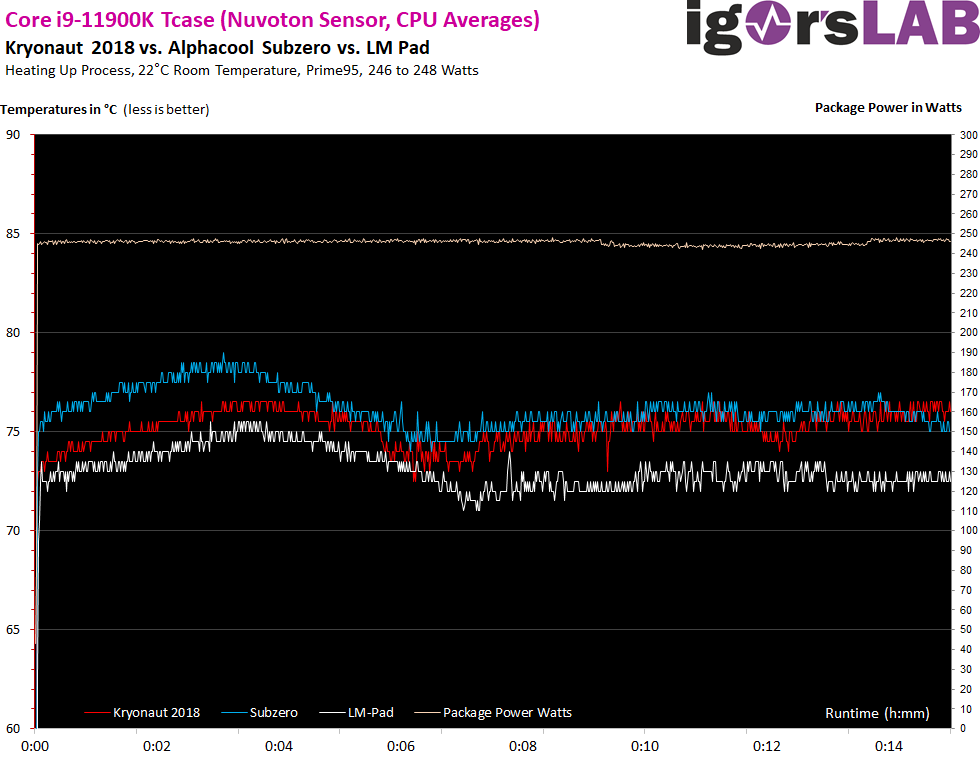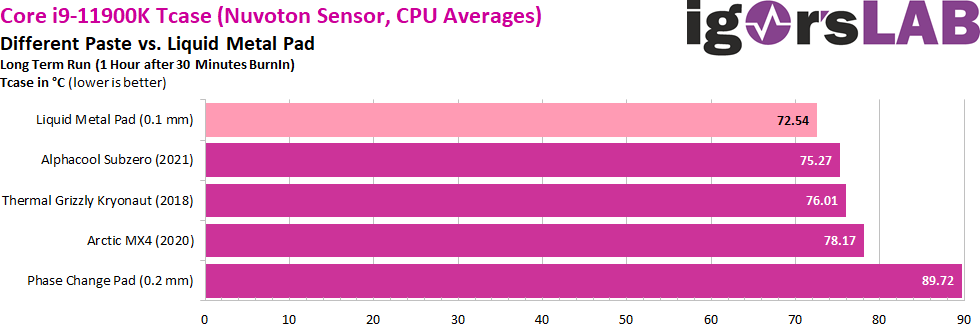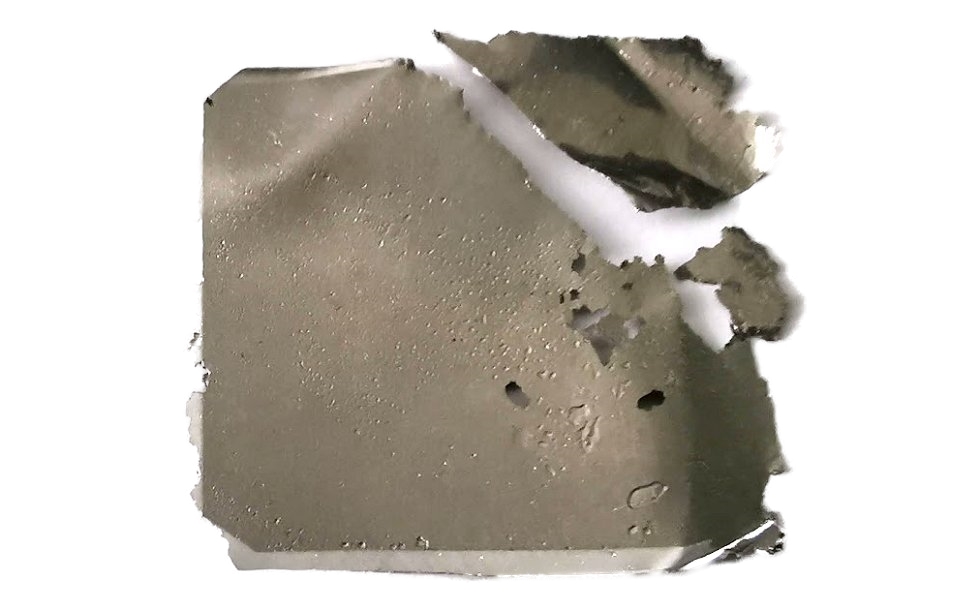Cooling performance
The Intel Core i9-11900 is a really thirsty colleague when needed and so I use Prime95 with AVX and Small FFTs to (almost) fully utilize the 250 watts set in the BIOS. In the end, 246 to 248 watts are on the clock here. First, I also do a kind of initial burn-in over about 15 minutes for the pastes I use (with cooling, of course!) and the pad. After this time, the temperatures stabilize quite well. You can see from the first graph a certain rise in temperatures before they fall again and everything settles down to a more even level.

The two best pastes in the test field, the Alphacool Subzero and the older Thermal Grizzly Kryonaut act quite similar here. I have politely not documented a counter test with a current syringe from 2021, which unfortunately has a completely different content, because it roughly coincides with the performance of the Arctic MX-4. However, we can already see here that the LM pad performs the best by far. It can’t work miracles, that was already clear to me before, because in order to get significant temperature differences at all with such thin layers below 0.1 mm, you have to do some serious magic.
Now let’s take a look at the five long term runs. I applied full load again after the short burn-in (see above) after cooling down and rebooting the system. I didn’t start logging until 30 minutes into the run and then let everything run again for over an hour. After that I calculated the average value for each paste, which we can now see all sorted together in the last graph One gains compared to the best paste on average another 2 to 3 Kelvin, not bad.

The big miracle did not happen, which was to be expected, but it proves that such a liquid metal pad has its justification, if it falls into the right hands. It will certainly never dry out, therefore performs consistently for years and also slightly better than any commercial paste and it is also quite easy to remove again. My sample, which I fished out of an OEM’s shipment, is representative of what is currently available on the market.
How to avoid sticking
And now we finally come to the question of how it looks with the removal after use. I already wrote that a smooth surface performs quite well and that the unfortunately widespread advice with sanding does not help, on the contrary. The surface remains the same, the area may even become larger and you also damage its structure irrevocably. I did the tests with the original IHS of AMD and Intel CPUs, in addition a water block with nickel-plated bottom and an air cooler with DHT (ground heatpipes and aluminum heatsink) – everything could be removed again quite easily and cleanly. The picture shows the melted foil after the unproblematic peeling off.
And where do you get such pads?
Due to the rather mixed customer experience with the pad from e.g. Coollaboratory, no other provider has dared to bring a similar product to the market, which I find quite regrettable. However, the fear of these companies of RMA cases due to improper handling and the possible loss of image due to unqualified application, including the subsequent comments of frustrated end users in the social networks, is probably too great to find a solution here.
Or maybe not? Let’s take a not-so-representative poll to see if anyone would like to see such a product in a slightly more practical presentation. The pad I tested from a well-known OEM, which I could also imagine being used in enterprise applications, would definitely deserve a chance, but only with the necessary background knowledge of careful melting. If you block that out, you will fail again and again. But I’m a journalist and tester, not a retailer or shop, and not even a registered merchant. But maybe one or the other can be convinced to jump on board?
































Kommentieren